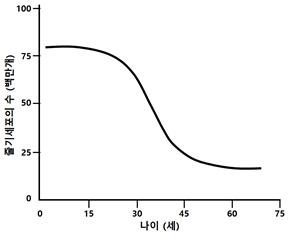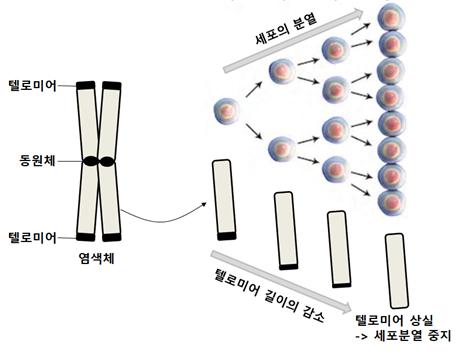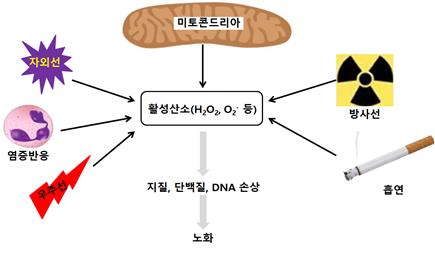11 What is aging?
페이지 정보

본문
Today's topic is aging. In English it is aging. A more difficult term is called senescence.
What is aging?
1. What is aging?
In a word, it means getting old. As people grow older, they age and eventually die. To put it a little biologically, aging is all the processes that occur after growth is complete. As aging occurs, pigment accumulates and organs turn dark brown. Additionally, cell function deteriorates, the skin becomes thin and wrinkled, and body hair falls out.
2. How does aging happen?
There are three main causes of aging that are currently being studied. Decrease in stem cells, loss of telomeres, and DNA damage caused by reactive oxygen species cause aging. In the previous video, I already explained that the decline in stem cells causes aging. To put it simply, as a person ages, the number of adult stem cells decreases and their activity decreases, resulting in a decline in the ability to repair tissue damage, leading to aging.

Second, it is an aging mechanism caused by loss of telomeres.
Human genomic DNA has repeated base sequences called telomeres at both ends. It's easy to have multiple copies of the same DNA attached to each other. The process of cell division and proliferation involves replication of genomic DNA, and during this replication process, telomeres gradually become shorter. Once the telomeres are shortened and completely lost, the essential gene regions that existed inside the telomeres are now lost. At this stage, cells lose genes essential for their survival, so they can no longer survive and die. Ultimately, the number of cell divisions is proportional to the length of telomeres, and when telomeres become shorter, the cell can be said to be aged.

Third, DNA damage caused by free radicals is the mechanism that causes aging. In order for human cells to live, the mitochondria within the human cells must continuously produce bioenergy called ATP. This process is called cellular respiration. In the process of producing ATP, mitochondria transfer electrons to oxygen. Normally, the oxygen that receives the electrons combines with hydrogen ions to become water, but if an error occurs in this process, free radicals are created. In addition to this mechanism, active oxygen can be created in cells by ultraviolet rays, cosmic rays, smoking, inflammatory reactions, and various environmental pollutants. The free radicals produced in this way destroy DNA, proteins, and lipids in cells, causing them to age.

In addition to the above three causes, aging phenomenon caused by abnormal actions of T cells is also being studied. I believe everyone knows that among the lymphocytes responsible for immunity, there are T cells and B cells. T cells are produced by hematopoietic stem cells in the bone marrow and mature in the thymus, which shrinks and greatly reduces in size after the growth period. Therefore, it is thought that most T cells are produced during childhood and are responsible for our body's immune response throughout our lives. However, T cells that have survived for too long mistakenly attack their own cells, resulting in a type of autoimmune disease called aging.
3. Are stem cells effective in preventing aging?
There is a very high possibility that stem cells can help prevent aging.
Benefits of Stem Cell Transplantation for Aging
-Feeling revitalized and rejuvenated
-improve physical ability -Improved hair quality
-increased sexual desire
-reduction of pain
-Improves strength, balance and general mobility
-strengthen immunity
-Improved quality of life
-Immune system regulation
-Reduces inflammatory markers
- PrevAnti-inflammatory effect of ADSC 24.04.16
댓글목록

Dylan님의 댓글
Dylan 작성일
텐티비 등 54개의 사이트에서 실시간 스트리밍으로 UFC 경기를 무료로 볼 수 있으며, 다양한 스포츠를 갖추고 있어 시청자들에게 큰 만족감을 주고 있으며, 이러한 다양한 사이트들은 스포츠를 사랑하는 사람들이 편리하게 경기를 접할 수 있게 제공합니다.
실시간중계 스포츠
무료중계 킹콩
스포츠 채널
EPL 라이브 http://blackno1.co.kr/49/?bmode=view&idx=38230051&back_url=&t=board&page=

온라인 카지노 사이트님의 댓글
온라인 카지노 사이트 작성일
안전하고 공정한 사이트 선택 가이드을 소개합니다. 보증업체 인증, 이용자 리뷰, 다양한 게임 등을 기반으로 신뢰할 수 있는 사이트를 소개합니다. 한국 카지노사이트 추천과 리뷰를 통해 사이트를 소개합니다.
비타임사이트: https://Xn--Z69A93Zqhewvfroc.com/20/?bmode=view&idx=39783511&back_url=&t=board&page=





 +82-2-532-2856
+82-2-532-2856 info@panacellbio.com
info@panacellbio.com 521, Teheran-ro, Gangnam-gu, Seoul, Republic of Korea
521, Teheran-ro, Gangnam-gu, Seoul, Republic of Korea